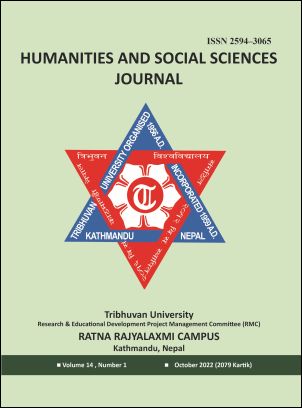Workings of Cyborg: Bridging Humans and Machines in The Matrix
DOI:
https://doi.org/10.3126/hssj.v14i1.57991Keywords:
artificially intelligent machine, cyborg, simulated reality, technological societyAbstract
Machines are human-made objects and subservient to humans. However, the simulated world dominated by cyborgs has led the humanity to postmodern fluidity. The cyborg, an artificially intelligent machine works with extra super power either inspired by divinity or satanic impulse. This article studies how The Matrix (1999), a science fiction film, blurs the distinction between human beings and simulated reality. The Wachowskis, the writers and directors, bring fusions between humans and the machines. The film unfolds the dynamics of human–machine interface in which humans ultimately remain subservient to machines. The study interprets the film from the postmodernist perspective concentrating on the ideas of Fredrick Nietzsche, Jean Francois Lyotard and Davis Ashley, who characterize postmodernism as indeterminacy, confusion and absurdity. It reflects on the question whether machines are doing good to humanity. It analyzes the movie from the lens of cinema as a culture industry. Its finding suggests humanity is trapped in a complex chain of simulated reality. The study adds insight on how Cyborgs have blended the material with virtual reality.




